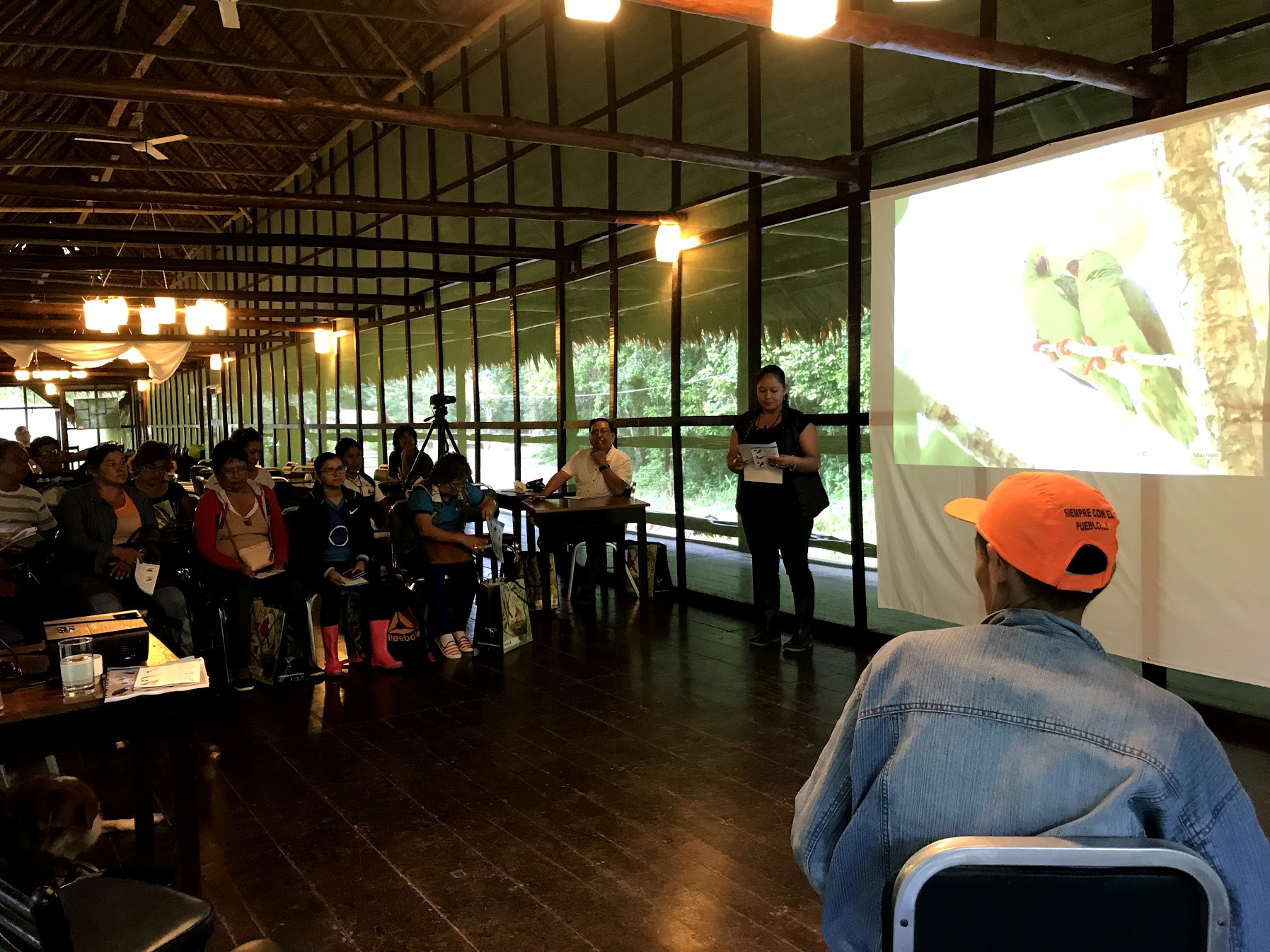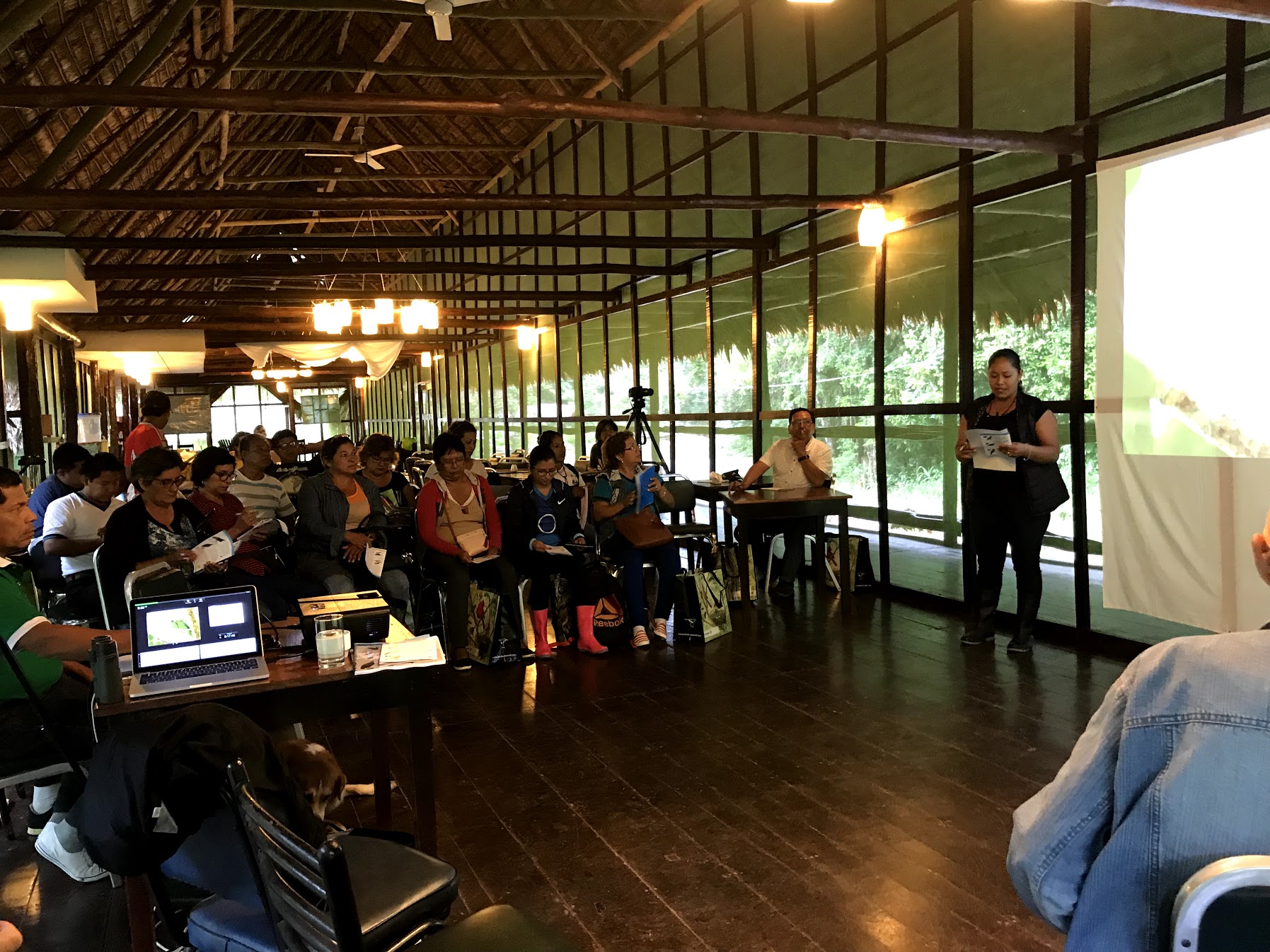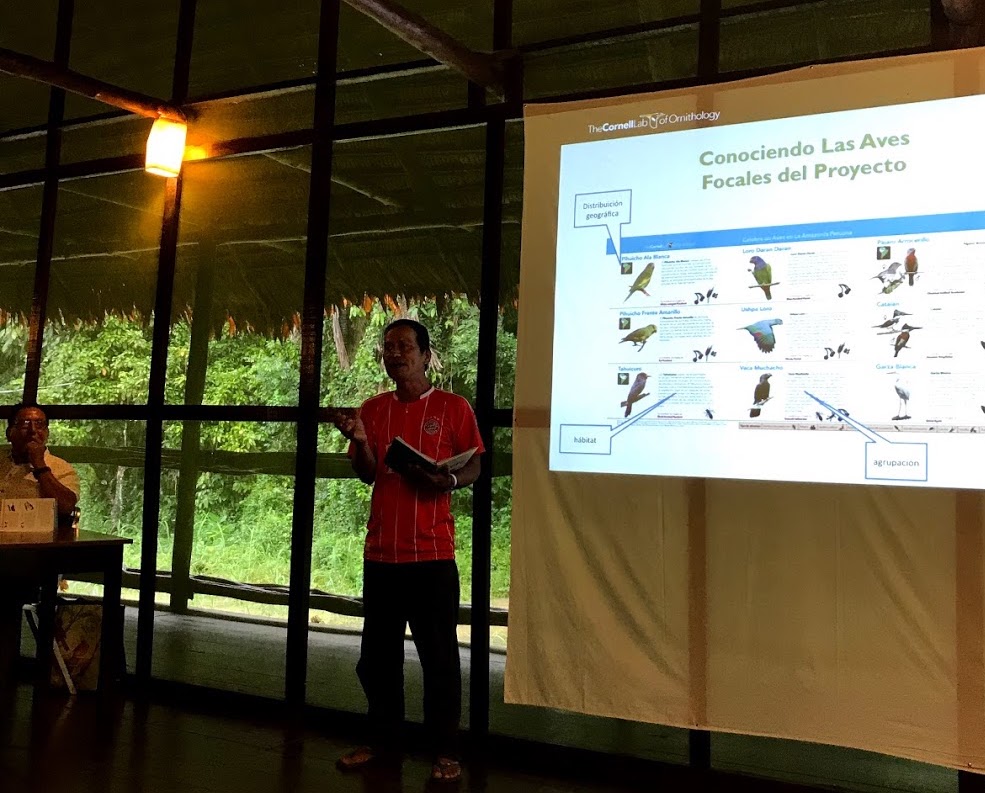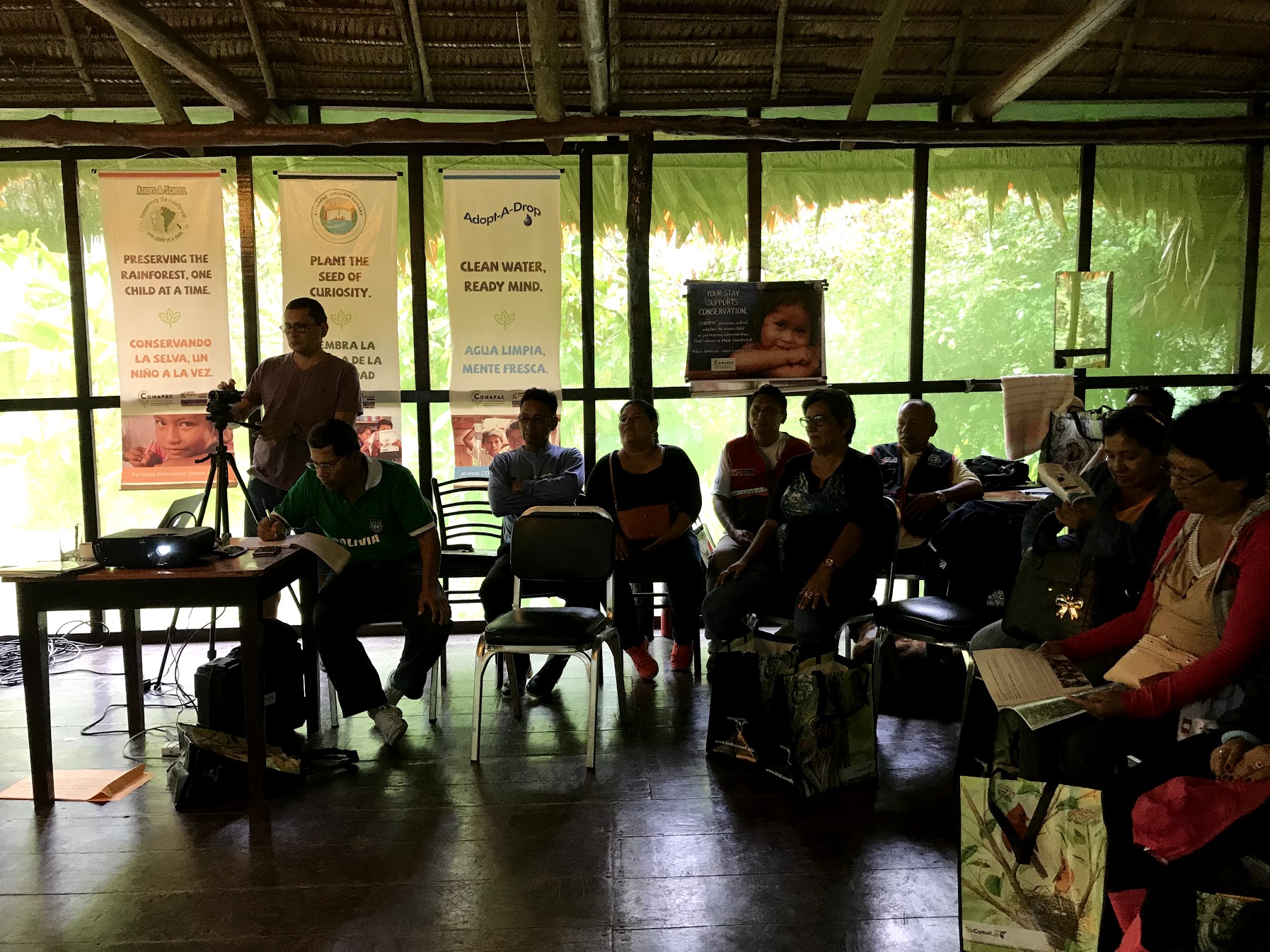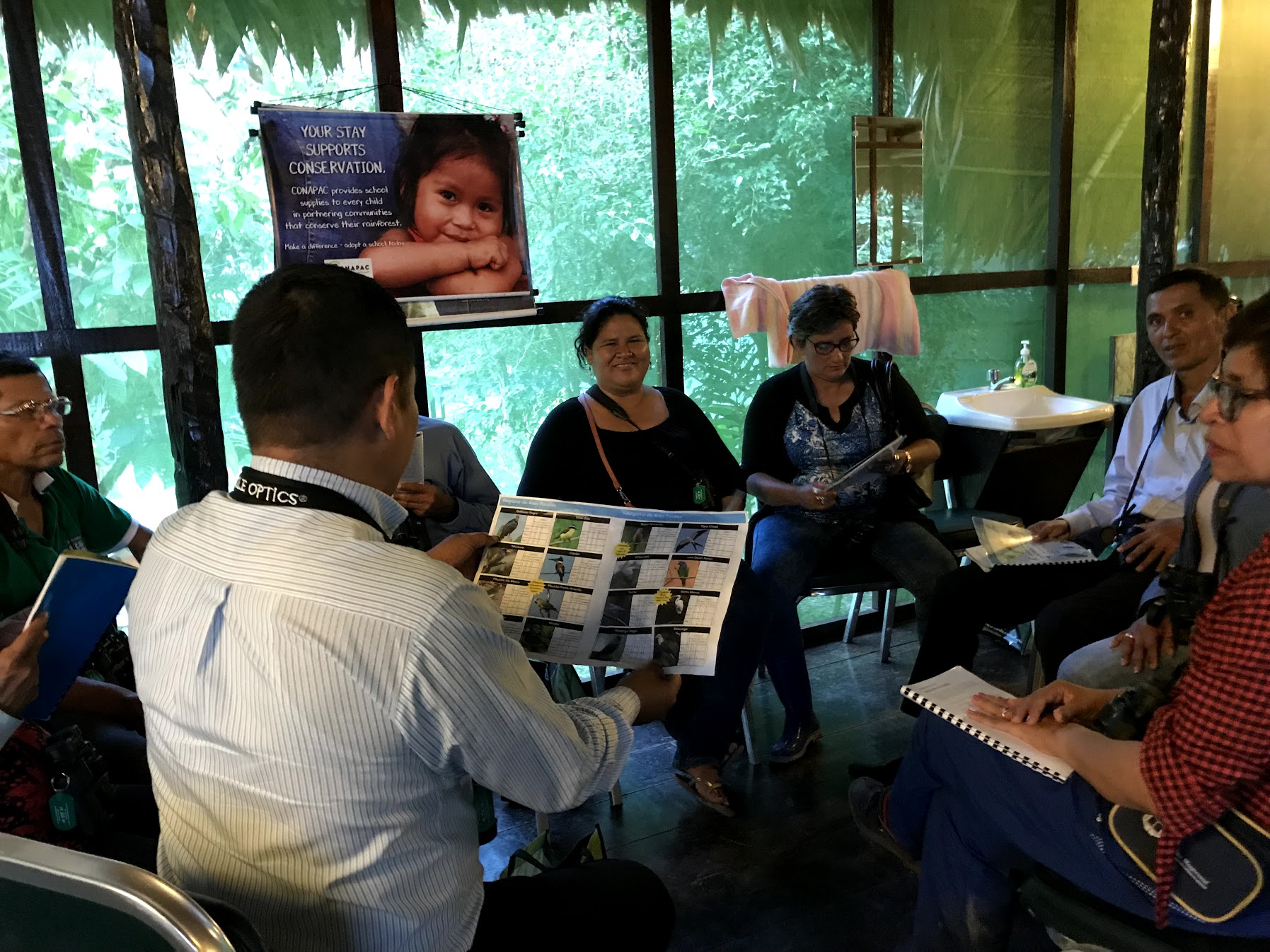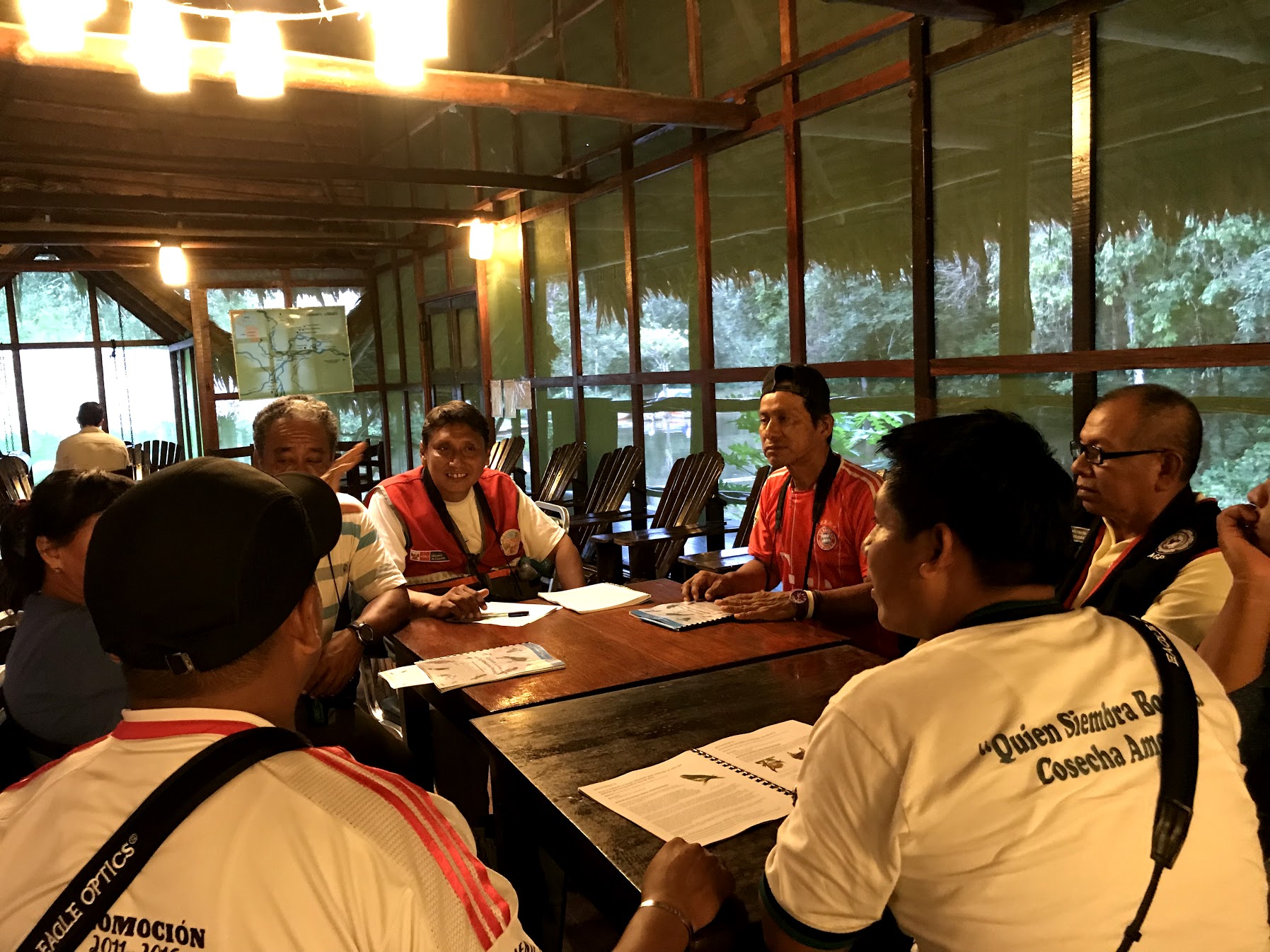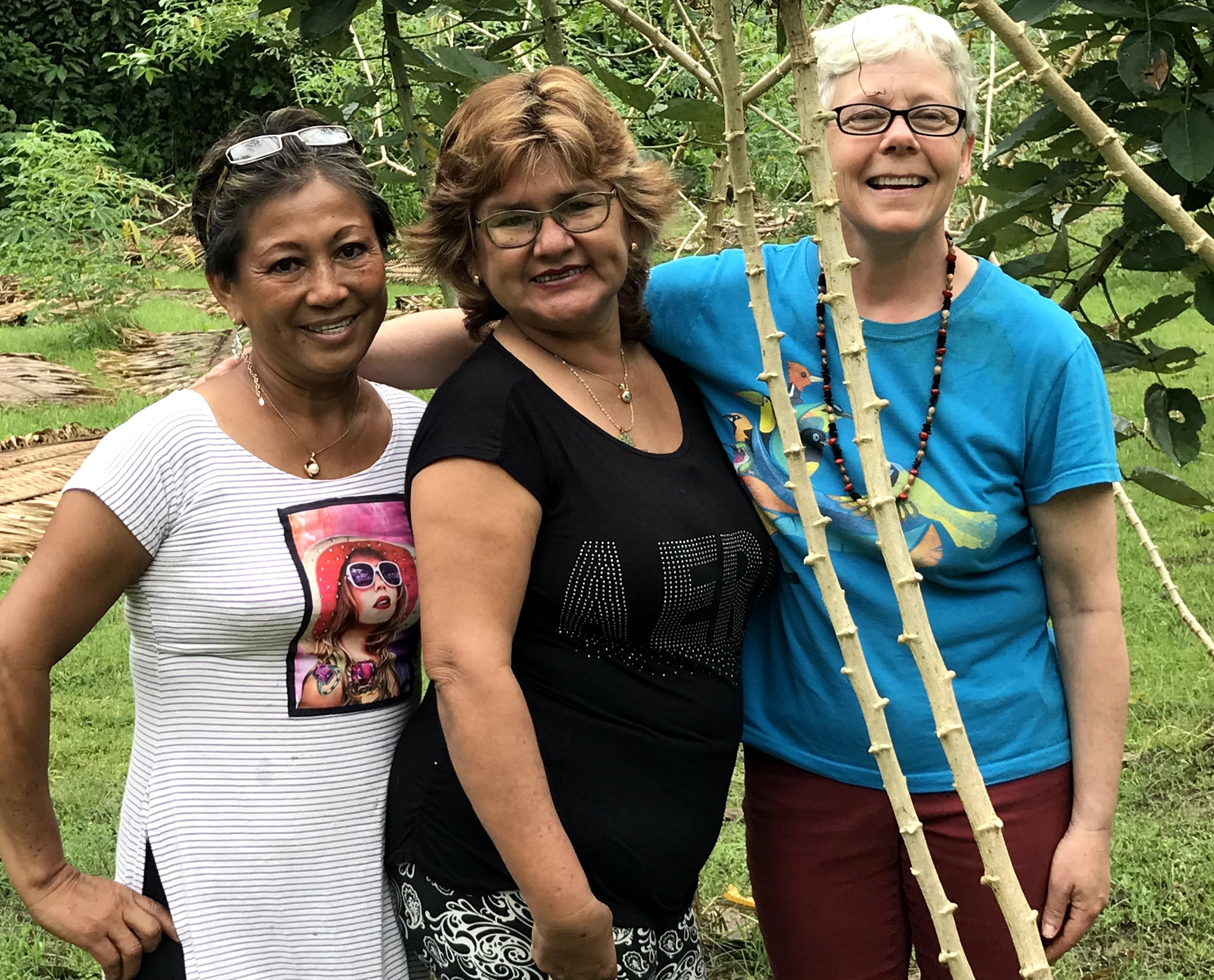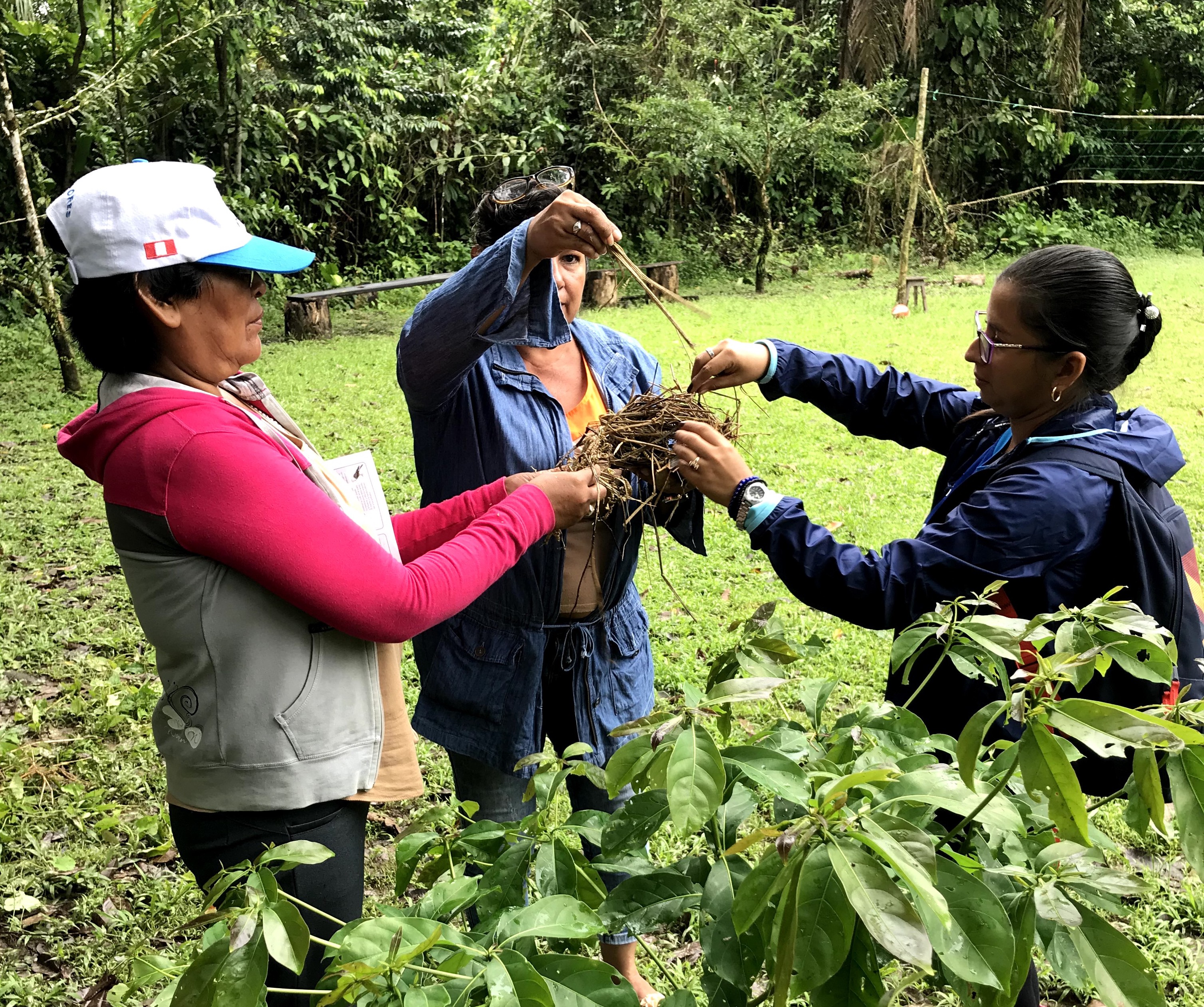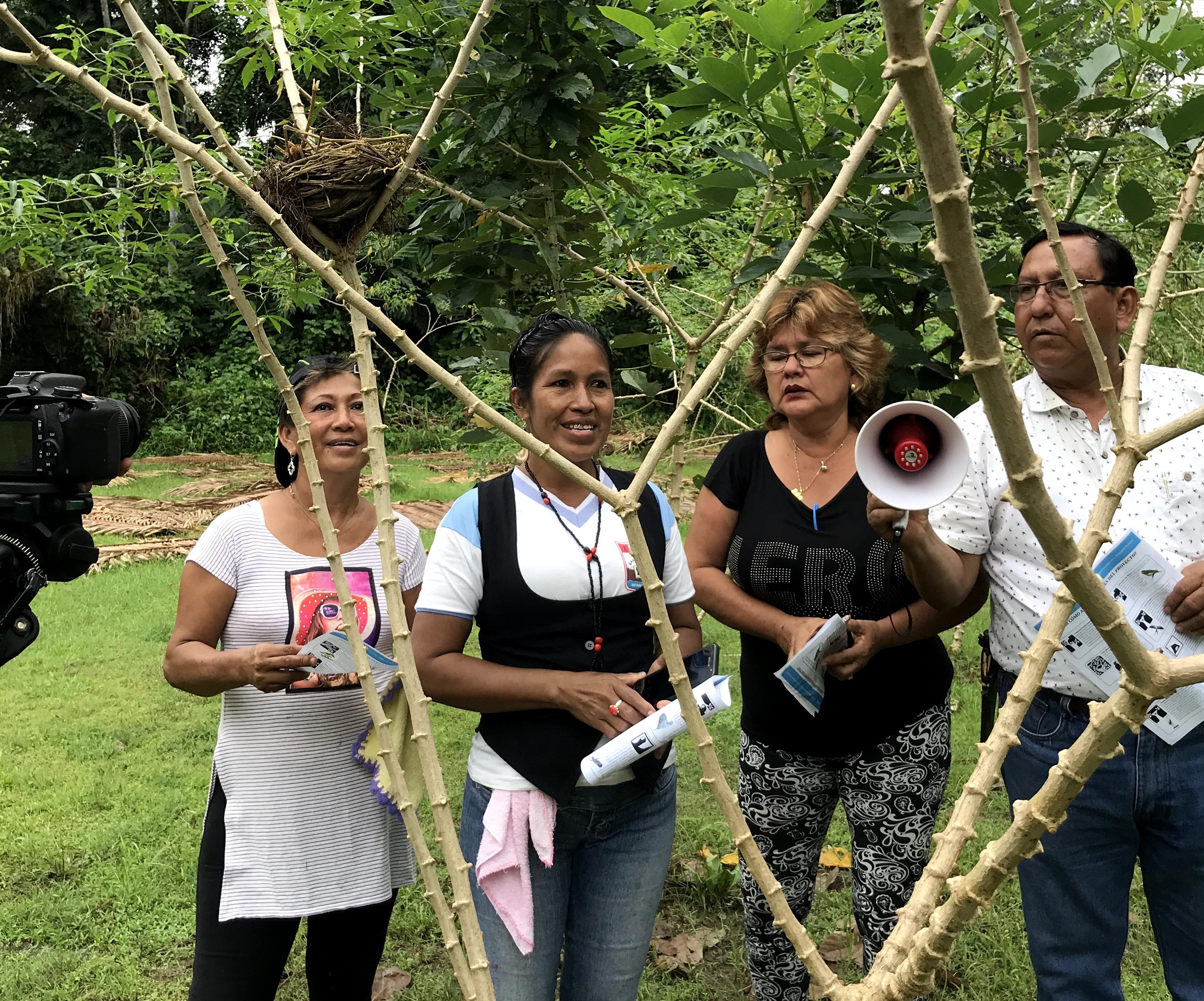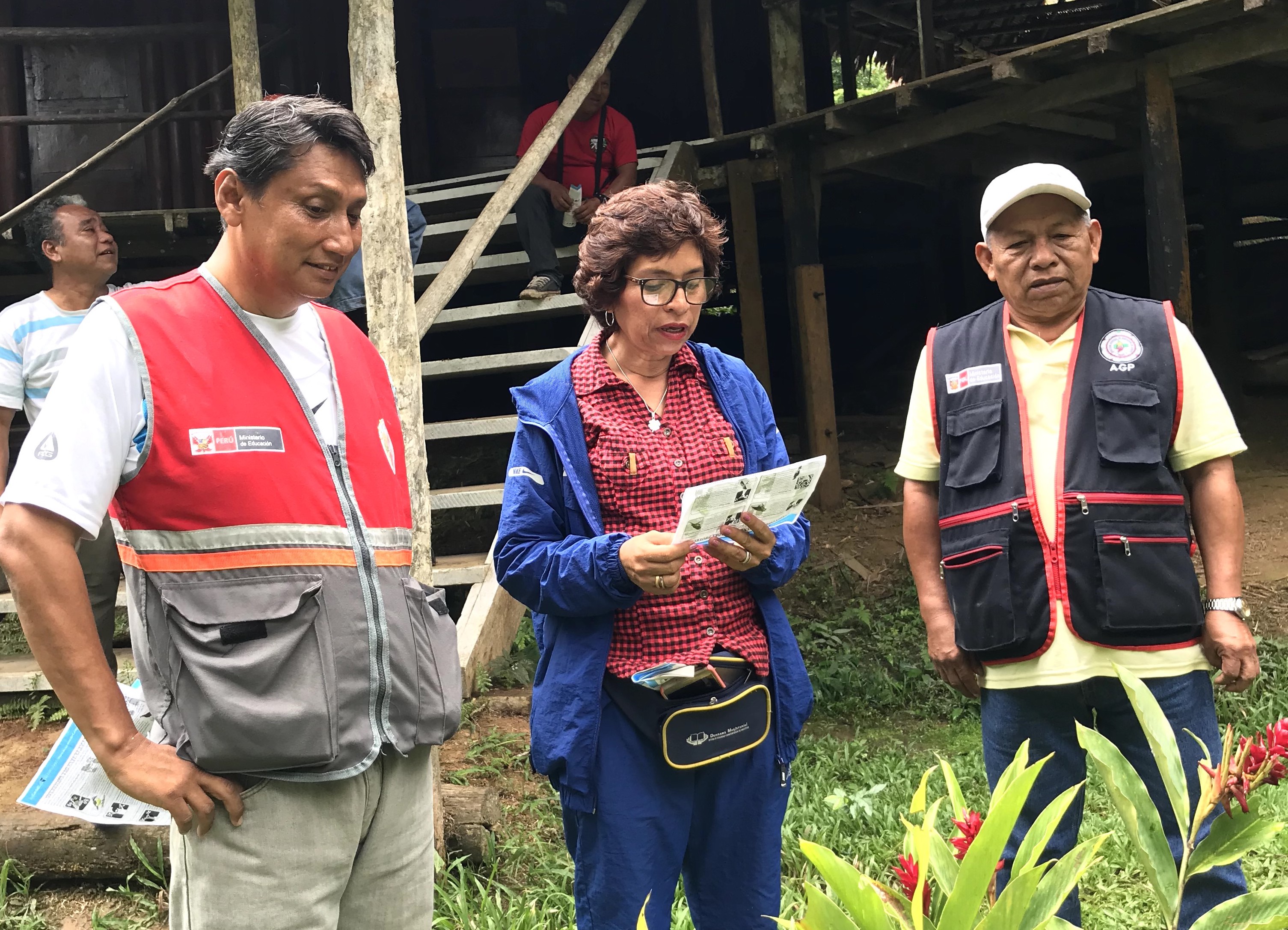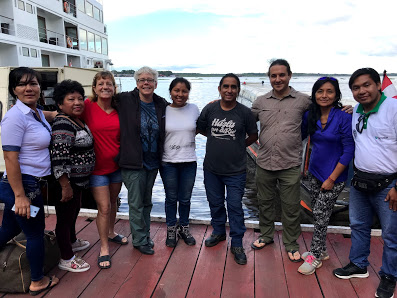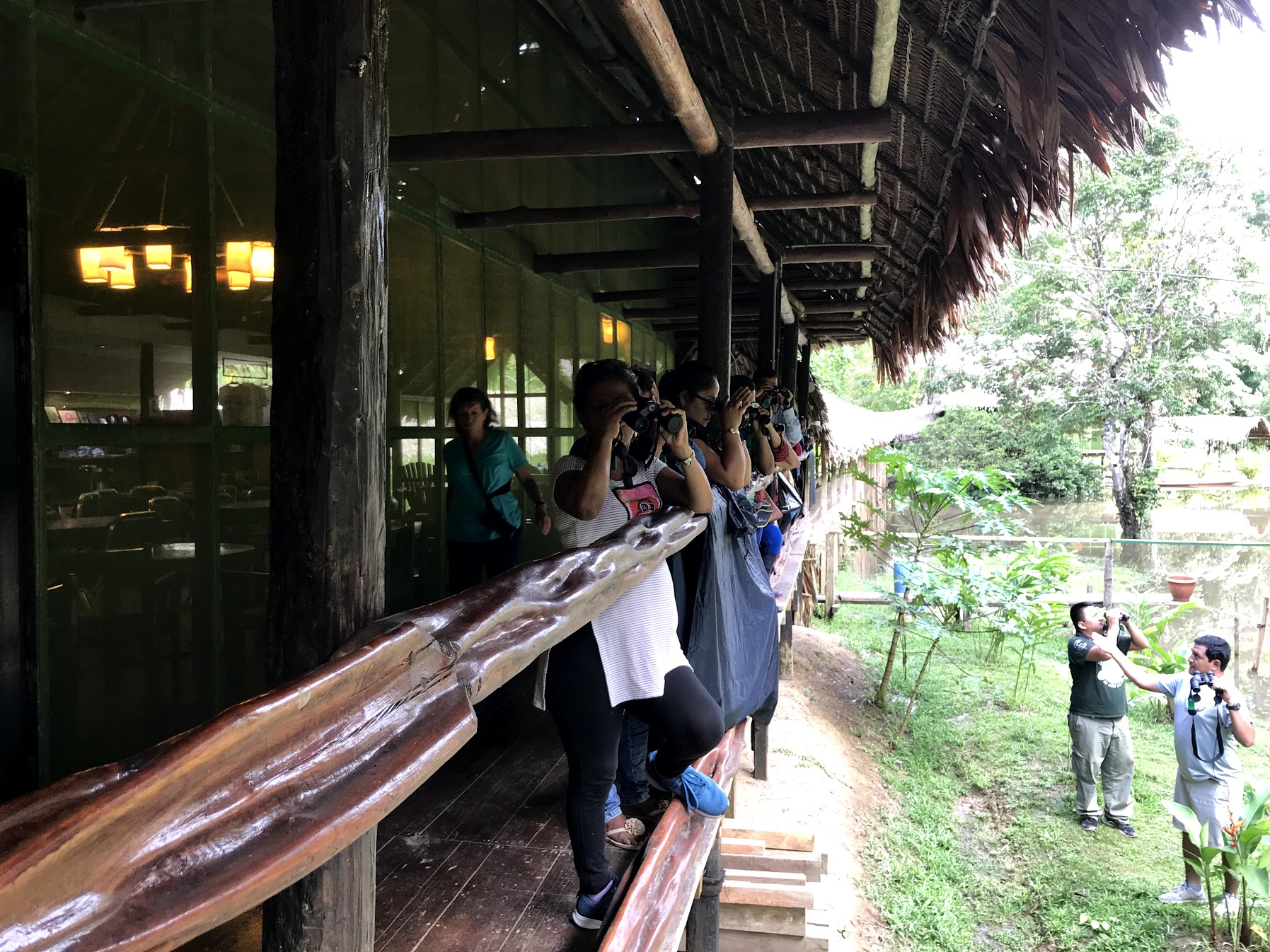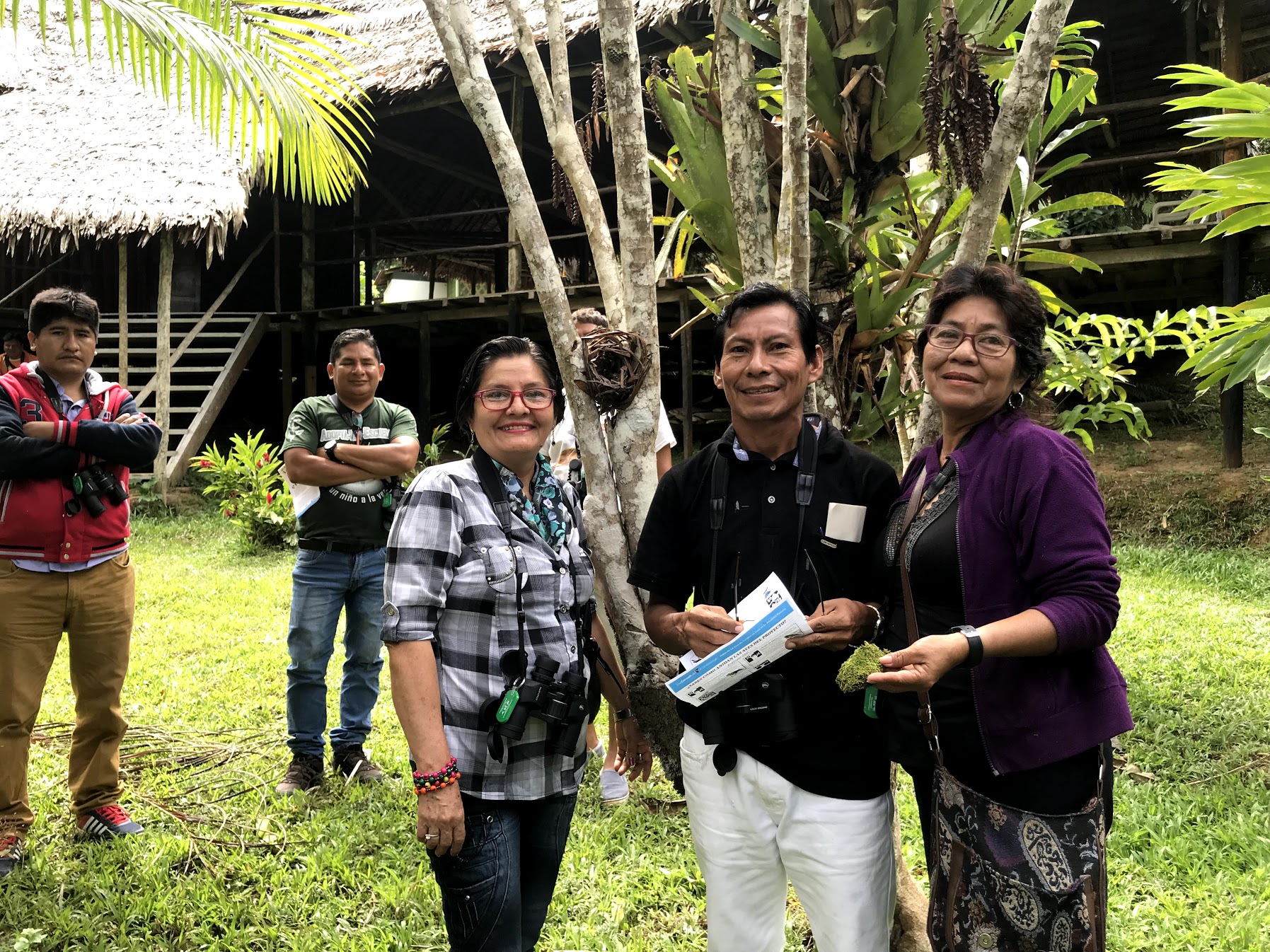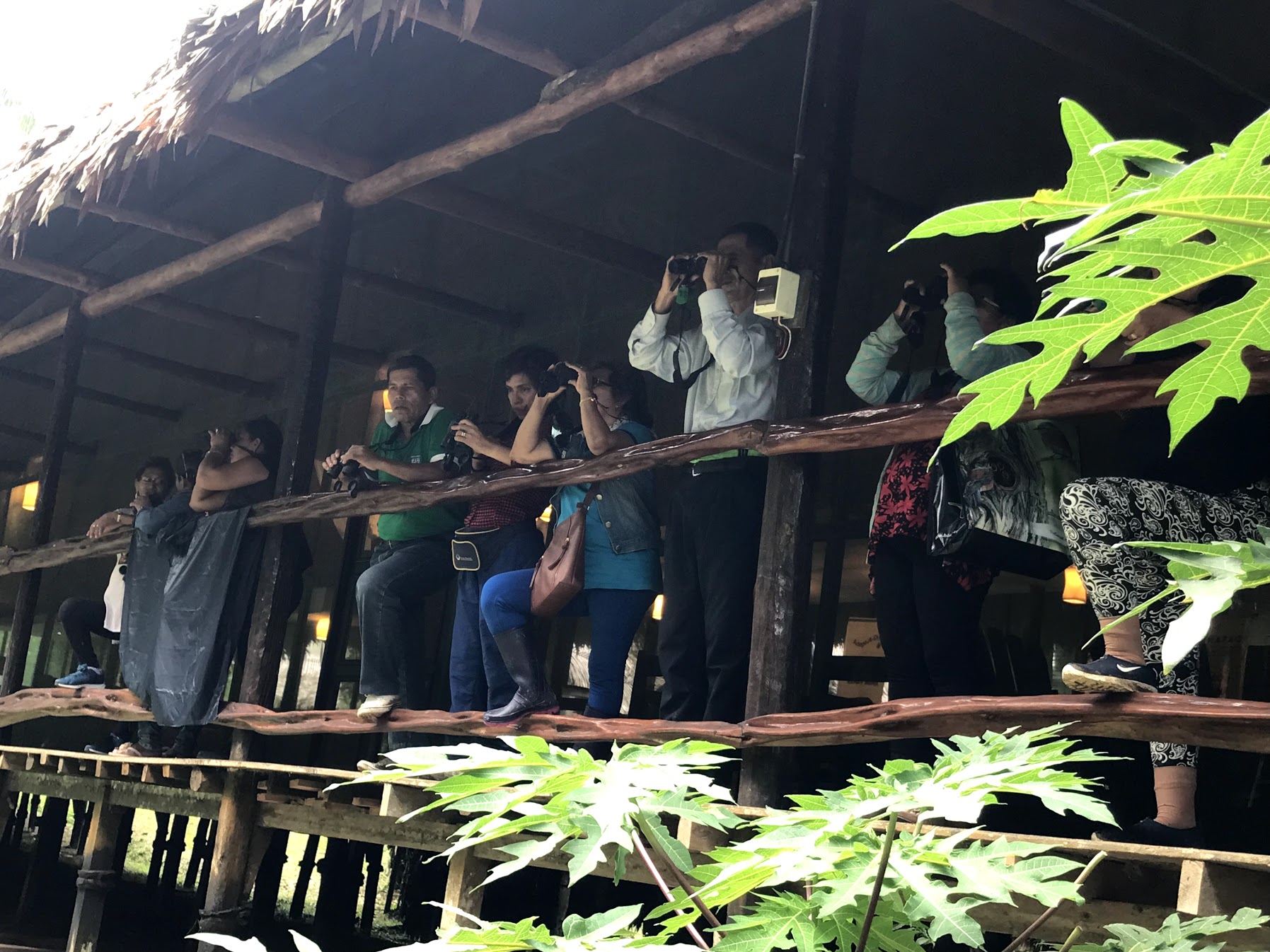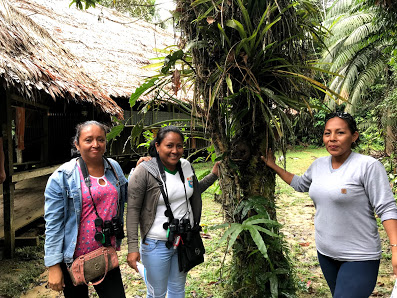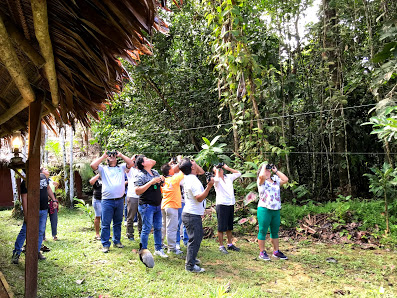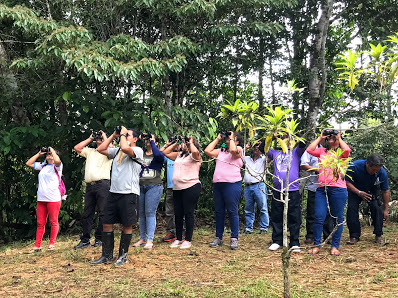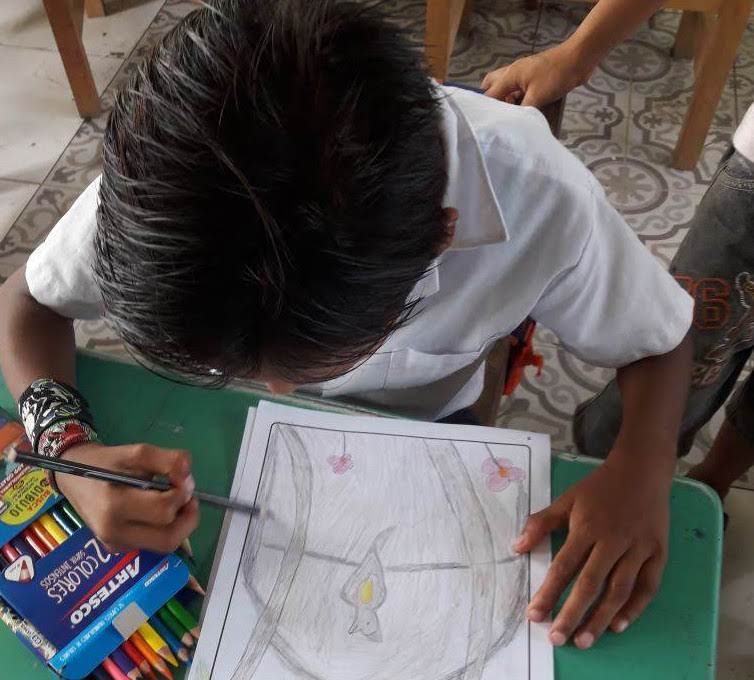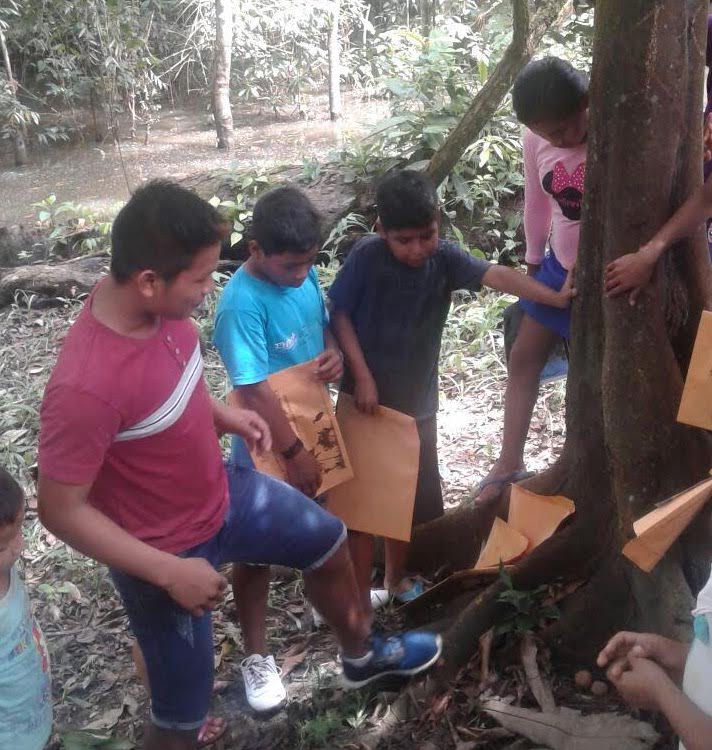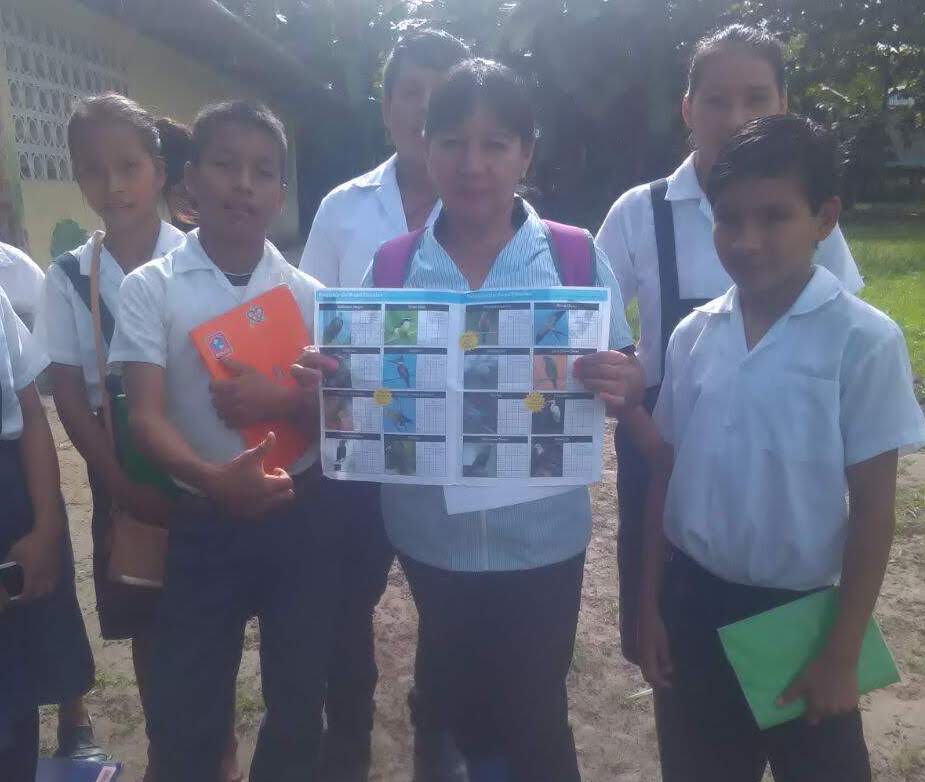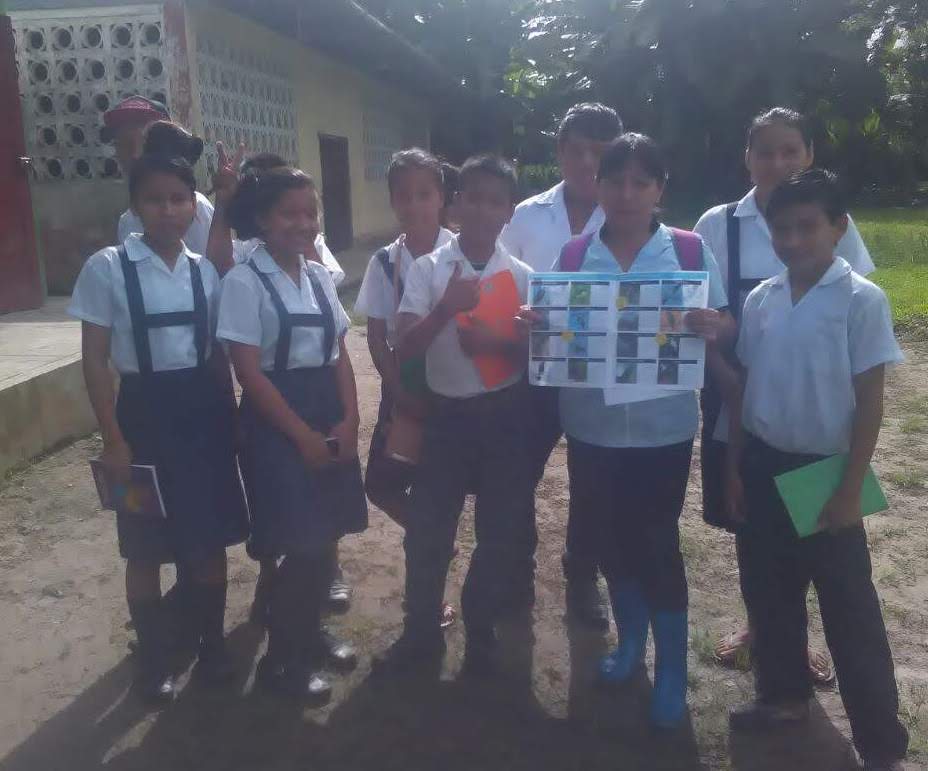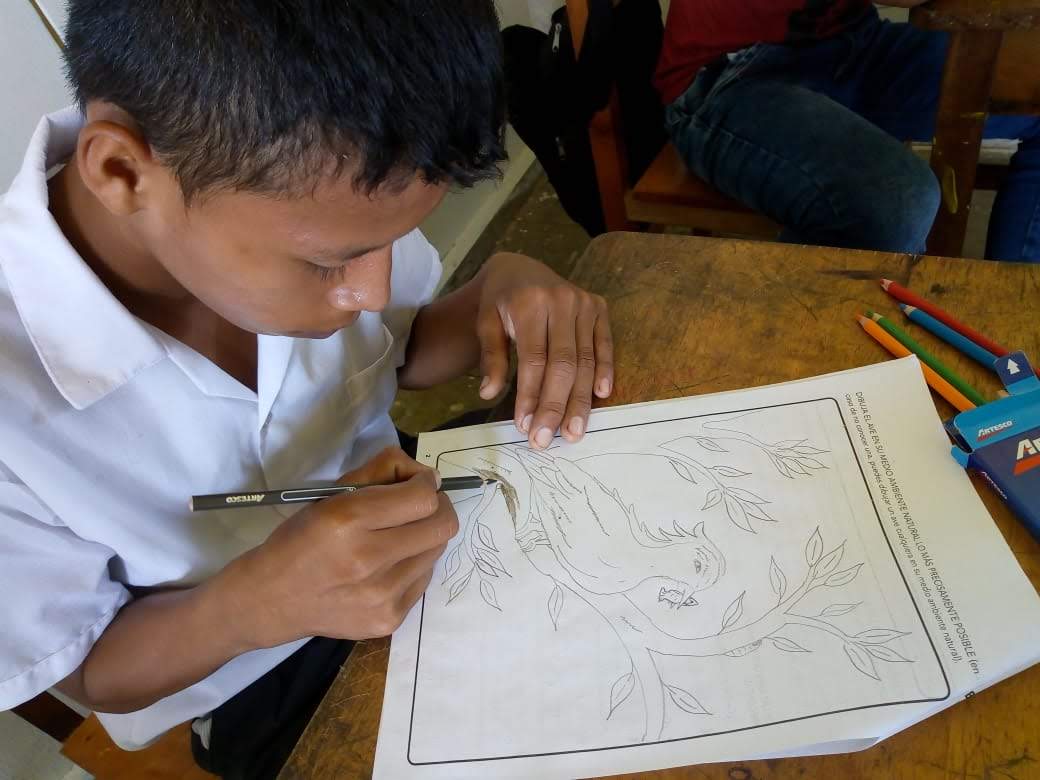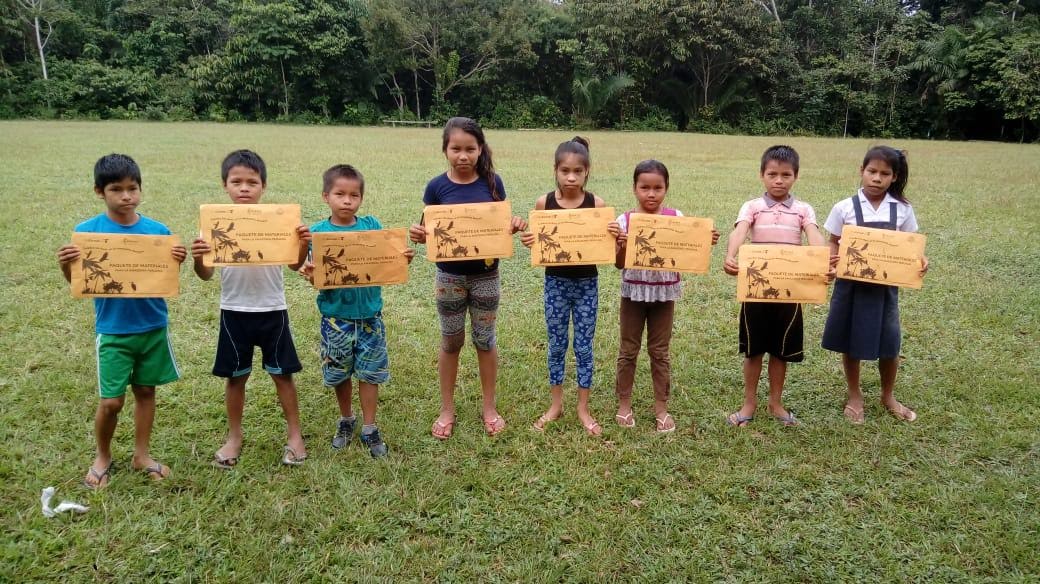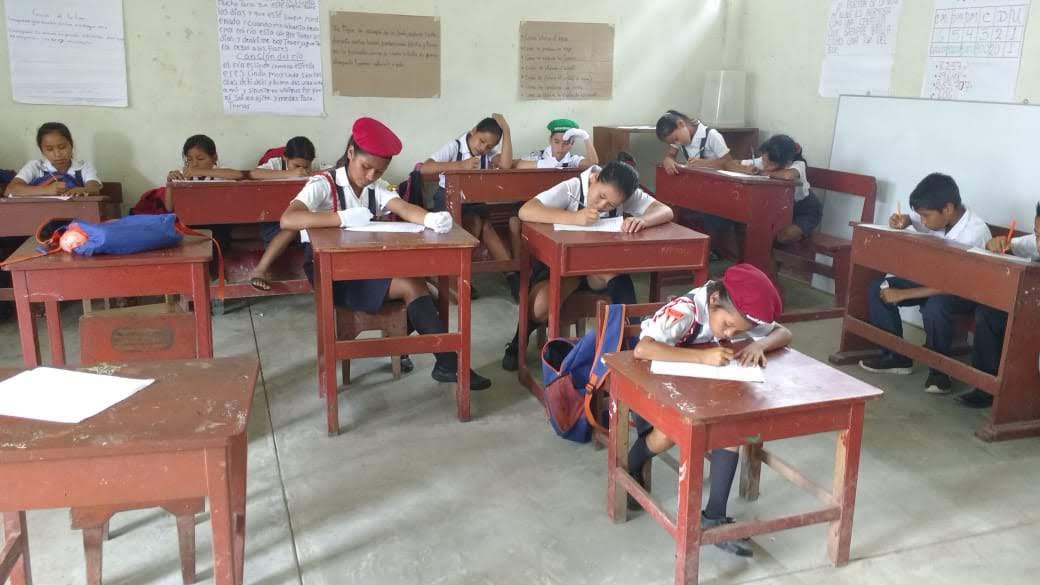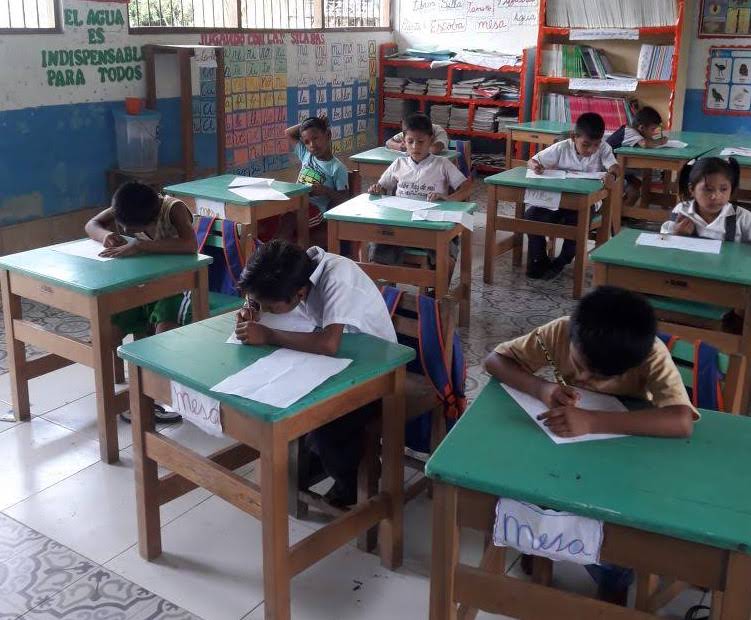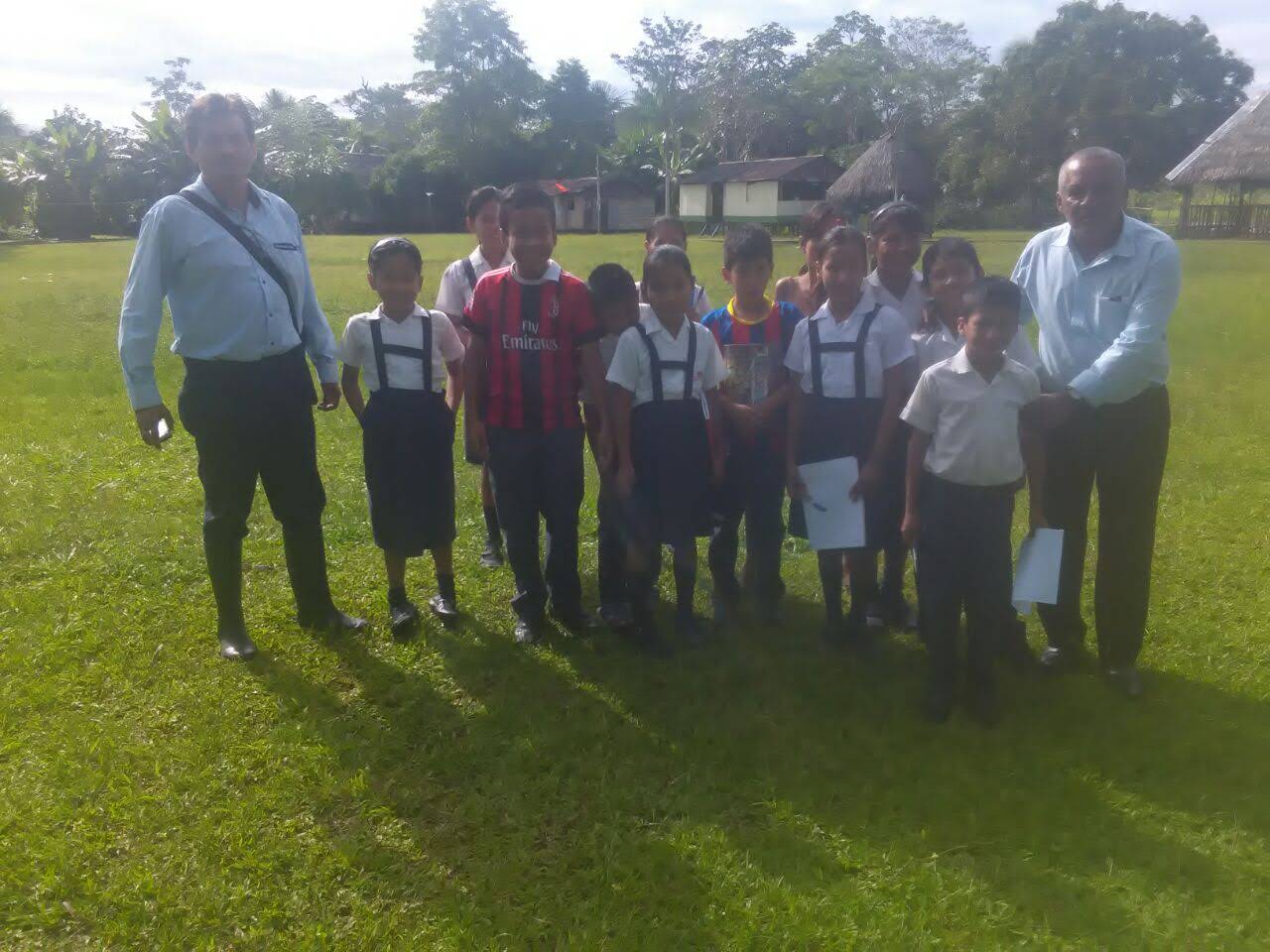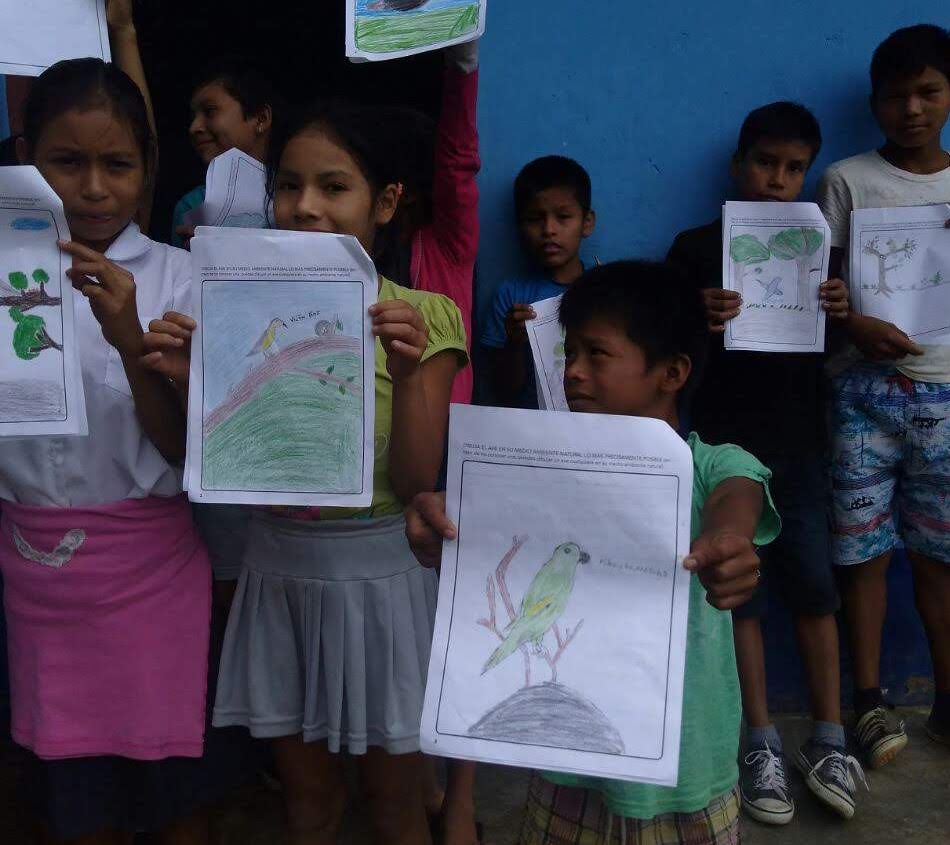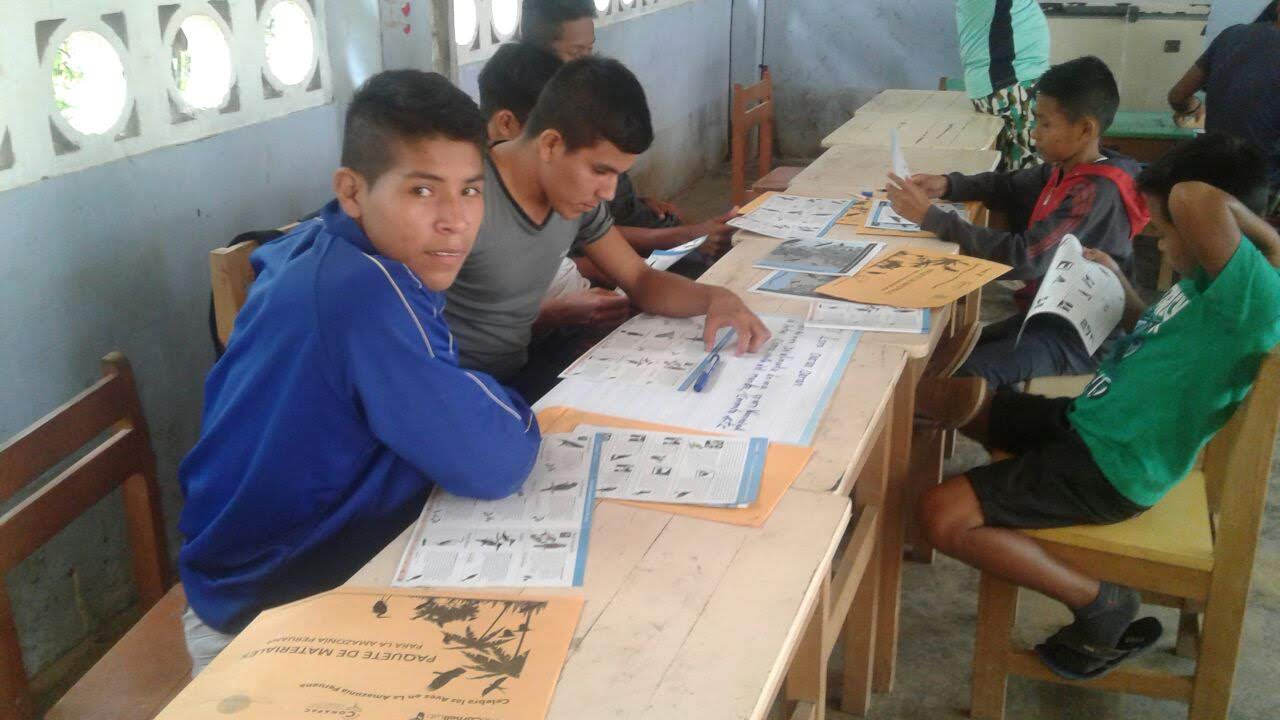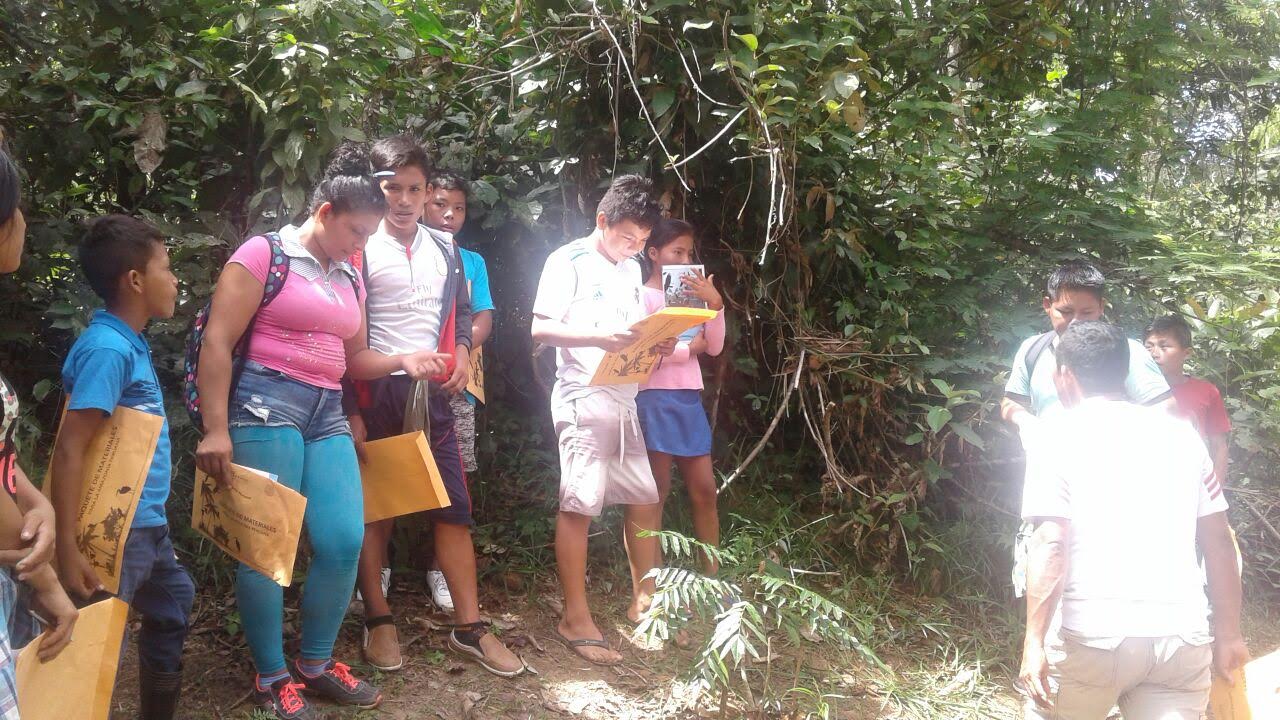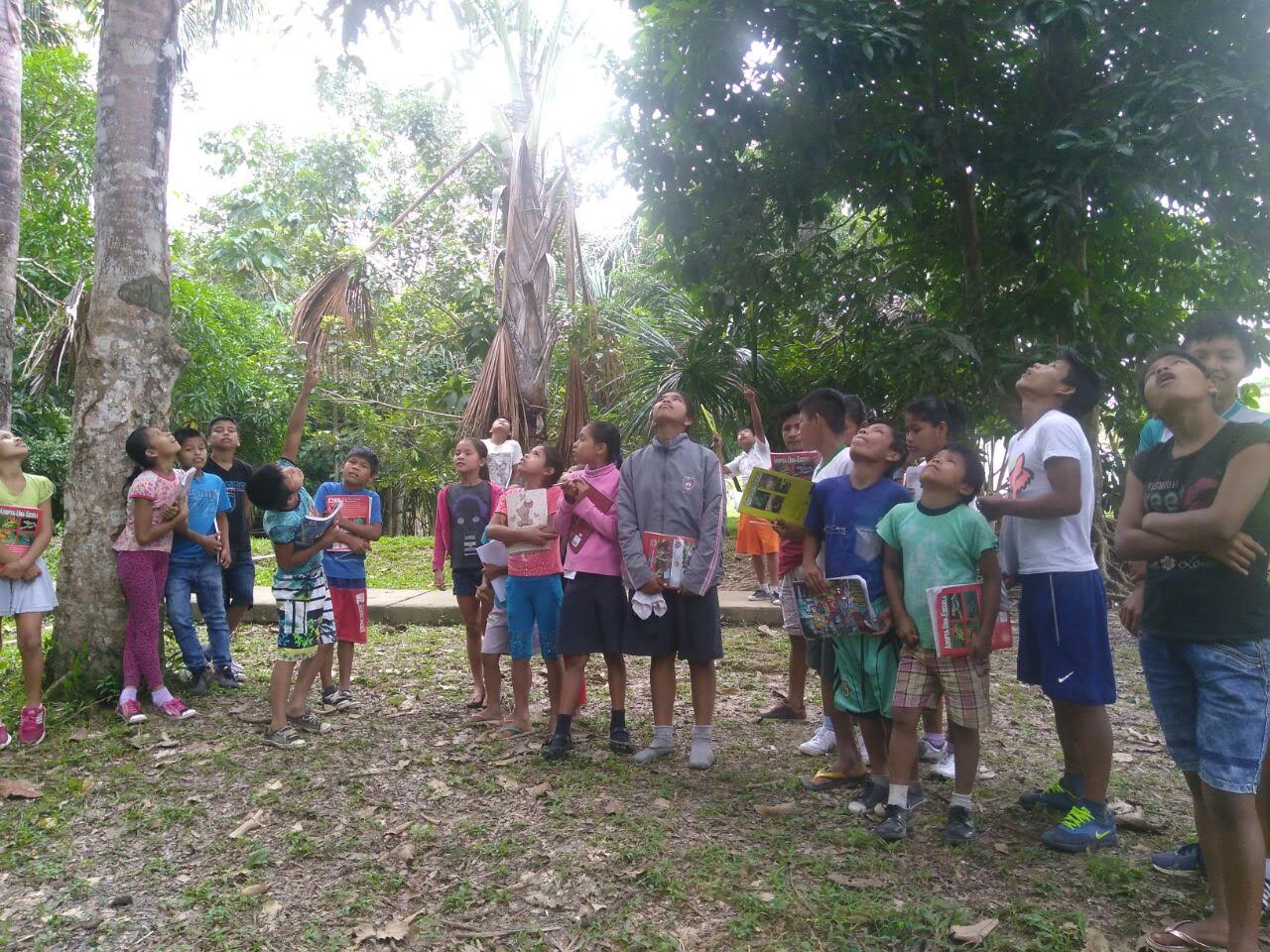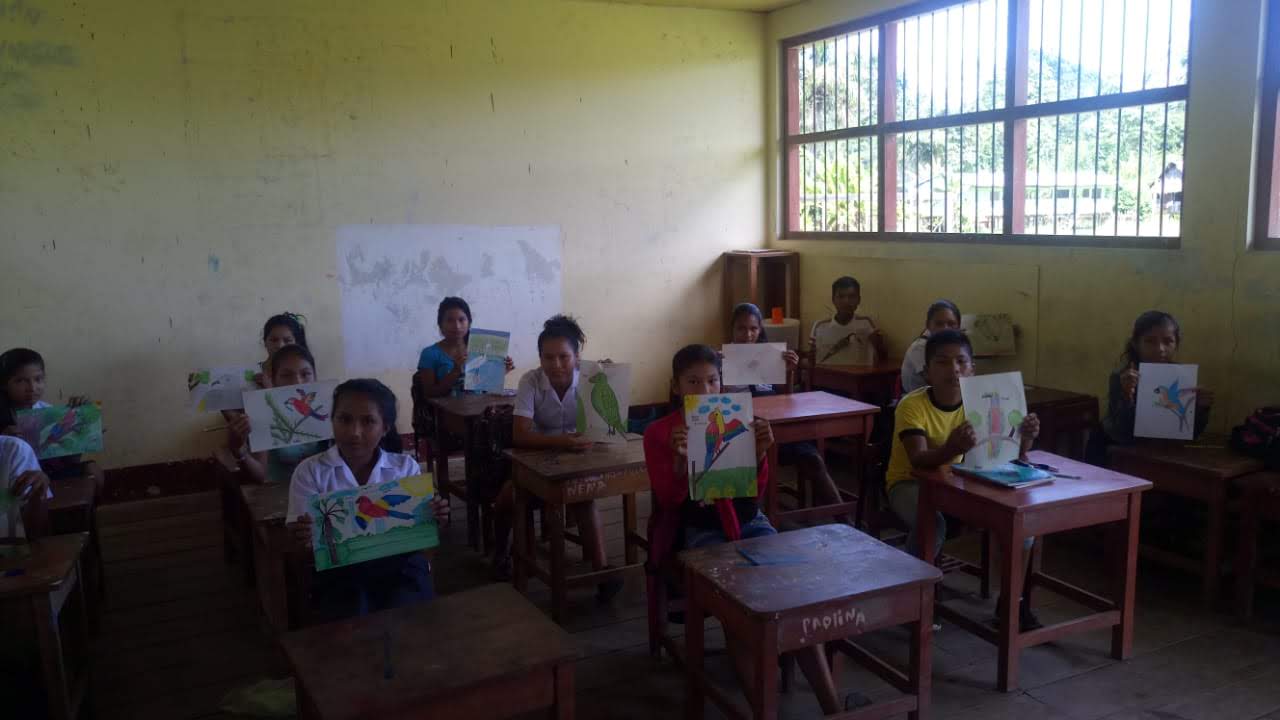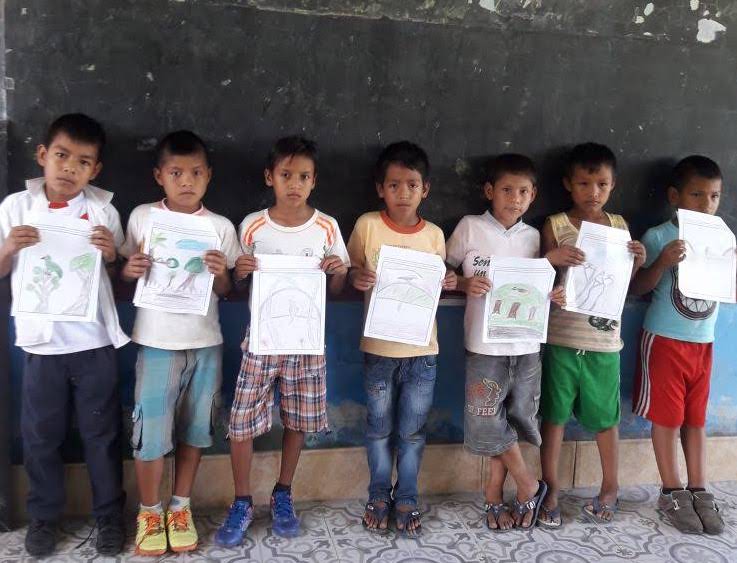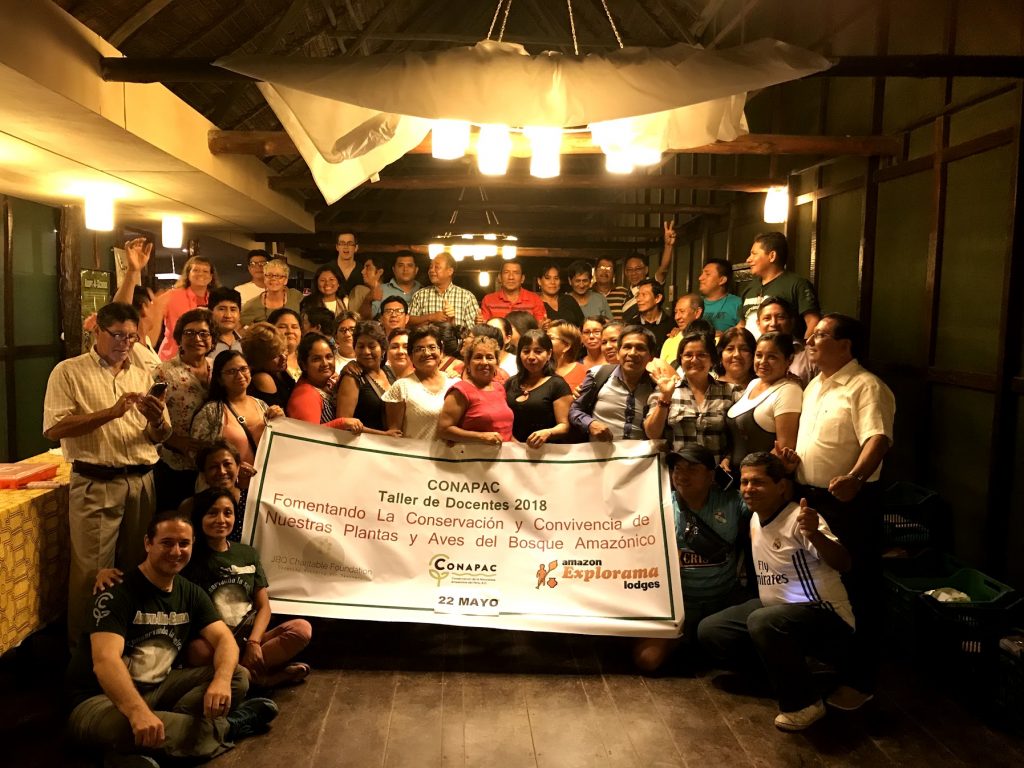 Photo ©
CUBS_Amazonía Peruana
Photo ©
CUBS_Amazonía Peruana
In May of 2018, students, teachers, and guides in the Loreto region of Peru joined forces with Celebrate Urban Birds, and CONAPAC (a Peruvian nonprofit organization focused on conserving the Peruvian Amazon) to launch the first regional citizen science project in the area. The project, titled “Celebra las Aves en la Amazonía Peruana,” includes an educational citizen science kit, an accompanying six-month Activity Guide/Curriculum specifically developed for the region, and embedded evaluation for each activity.
The project was iteratively co-created with teachers from the region, with the goal of helping students develop knowledge and pride of the birds in their rainforest ecosystem. Launched in May during the 2018 CONAPAC Environmental Science and Conservation workshop, the project includes weekly data collection, as well as interactive environmental education activities that incorporate the arts, citizen science, and community. Generous support and partnership from the JBQ Charitable Foundation and Detroit Zoological Society allowed approximately 100 teachers and community leaders from the region to be part of the initiative. During the workshops that took place at Explorama and ExplorNapo Lodges Karen Purcell and Explorama guides César Sevillano and Percy Reyna prepared teachers to identify the focal species, collect data, and supervise monthly artistic, cultural, and environmental activities. The activities cover difficult topics, such as the use of slingshots, capturing birds for tourism, beliefs regarding owls and other local species, and the relationship between birds and farmers. The teachers also learned about nesting birds and how to integrate interactive science into their classrooms. The workshop also provided teachers an opportunity to learn about Bosque de Niños, a program led by Pedro Paucarcaja and Teresita Ahuanari from Ania, and cervical cancer and gender violence awareness taught by Paul Holden.
The citizen science project “Celebra las Aves en la Amazonía Peruana” includes educational materials such as a colorful guide to the focal species, a bird silhouette poster, and a nesting guide to the focal species. The teachers now also have access to binoculars donated by Amazon Rainforest Workshops, and therefore were able to observe tropical birds up close for the first time. The training materials support observation and data collection, specifically monitoring 16 focal species selected by guides from Explorama Lodge, César Sevillano and Percy Reyna, who have a deep knowledge of these birds and communities. The Activity Guide also supports participation in the project and contains interactive activities, to be conducted over the course of six months, that focus on a) strengthening awareness of, and pride in, birds and the local environment, b) increasing knowledge of, and participation in, citizen science c) developing a sense of environmental responsibility, and d) improving quality of life. Furthermore, the co-created Activity Guide reflects on culture and the importance of preserving cultural stories, myths, and beliefs about birds from the region.
An important component of co-creating the project and supporting the teachers and researchers involved is frequent communication. Teachers communicated with the Cornell Lab of Ornithology and CONAPAC staff through WhatsApp and monthly meetings via Zoom, sharing their activities, photos, and ideas. Regular communication between teachers and Celebrate Urban Birds staff proved to be extremely important, as it strengthened regional awareness, provided opportunities for giving feedback on the project, and inspired energy, enthusiasm, and pride surrounding the activities.
Teachers dedicated to co-creating the project will continue to meet monthly to keep track of how lessons in the Activity Guide (curriculum) are progressing. These teachers will also be named as co-authors of the 2019 Activity Guide. The project will continue to be piloted for the next six months.
To download the Amazonía Peruana Activity Guide (curriculum) click here!
To download the project instructions and data collection form with tips on how to observe the 16 focal species, as well as a bird silhouettes poster, click here!
To download the 16 focal species guide with educational information about them, distribution maps, and cool facts about their behavior and ecology, click here!
To learn more about the nests of the 16 focal species click here!
